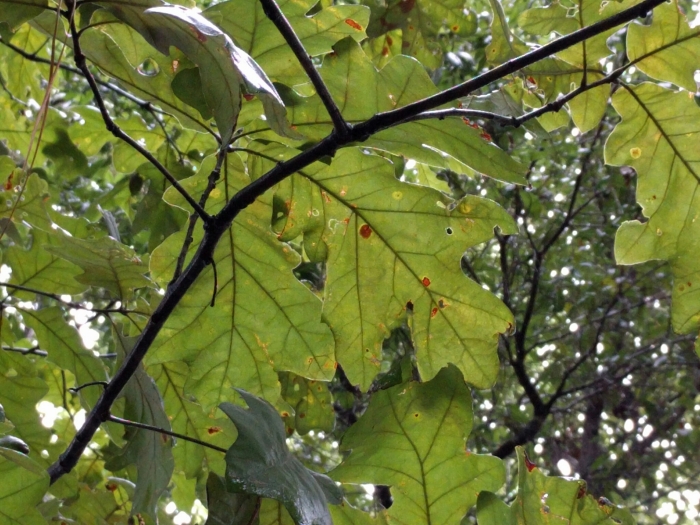Cherrybark Oak
(Quercus pagoda)
Cherrybark Oak (Quercus pagoda)
/
/

Irvin Louque
CC BY 4.0
Image By:
Irvin Louque
Recorded By:
Copyright:
CC BY 4.0
Copyright Notice:
Photo by: Irvin Louque | License Type: CC BY 4.0 | License URL: http://creativecommons.org/licenses/by/4.0/ | Rights Holder: Irvin Louque | Publisher: iNaturalist | Date Created: 2016-08-16T18:30:53-07:00 |























































Estimated Native Range
Summary
Quercus pagoda, commonly known as Cherrybark Oak, is a deciduous tree native to bottomland forests, floodplains, and well-drained upland sites in the southeastern United States. It is a stately tree that can reach heights of 100 to 130 feet (30 to 40 meters) and trunk diameters of 36 to 60 inches (91 to 152 centimeters), making it one of the largest red oaks in its native range. The Cherrybark Oak is distinguished by its dark green, glossy leaves with paler and softly hairy undersides, and its straight, strong form which contributes to its value as a timber tree. Its monoecious reproductive system produces separate male and female catkins on the same tree, with flowers appearing from February to May depending on the region. The tree’s twigs are thick and may be brown or gray, with a hairy texture when young, and the buds are egg-shaped, pointed, and angular.
Cherrybark Oak is valued for its acorns, which serve as a food source for many wildlife species, and for its use as a shade tree in large spaces. It is often planted in parks and rural landscapes for its impressive size and the ecological benefits it provides. While it is less cold-resistant than the Southern Red Oak, it is still a resilient species when grown in appropriate conditions. For successful cultivation, Cherrybark Oak requires full sun to part shade, medium water availability, and well-drained loamy soils. It is less tolerant of urban pollution compared to other oaks, so it is better suited to rural or suburban settings. Gardeners should be aware that the tree’s size and root system require ample space for growth, and it may be susceptible to oak wilt and other common oak diseases.CC BY-SA 4.0
Cherrybark Oak is valued for its acorns, which serve as a food source for many wildlife species, and for its use as a shade tree in large spaces. It is often planted in parks and rural landscapes for its impressive size and the ecological benefits it provides. While it is less cold-resistant than the Southern Red Oak, it is still a resilient species when grown in appropriate conditions. For successful cultivation, Cherrybark Oak requires full sun to part shade, medium water availability, and well-drained loamy soils. It is less tolerant of urban pollution compared to other oaks, so it is better suited to rural or suburban settings. Gardeners should be aware that the tree’s size and root system require ample space for growth, and it may be susceptible to oak wilt and other common oak diseases.CC BY-SA 4.0
Plant Description
- Plant Type: Tree
- Height: 80-100 feet
- Width: 15-40 feet
- Growth Rate: Moderate
- Flower Color: N/A
- Flowering Season: Spring
- Leaf Retention: Deciduous
Growth Requirements
- Sun: Full Sun, Part Shade
- Water: Medium
- Drainage: Medium, Slow
Common Uses
Bee Garden, Bird Garden, Butterfly Garden, Deer Resistant, Fire Resistant, Rabbit Resistant, Street Planting
Natural Habitat
Native to bottomland forests, floodplains, and well-drained upland sites in the southeastern United States
Other Names
Common Names:
Scientific Names: , Quercus pagoda, Quercus falcata var. pagodifolia, Quercus falcata subsp. pagodifolia, Quercus pagodifolia, Quercus falcata var. leucophylla, Quercus pagoda var. leucophylla, Quercus carpenteri, Quercus leucophylla, Quercus pagoda f. cocciniifolia
GBIF Accepted Name: Quercus pagoda Raf.